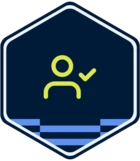Question for the community. Has anyone had someone they have setup Front for, and they simply do not get how it works? Totally stuck within the Outlook realm no matter how many training sessions, and guidance you have given? Keen to understand how others have overcome this.
Login to the community
No account yet? Create an account
Use your Front credentials
Log in with Frontor
Enter your E-mail address. We'll send you an e-mail with instructions to reset your password.


